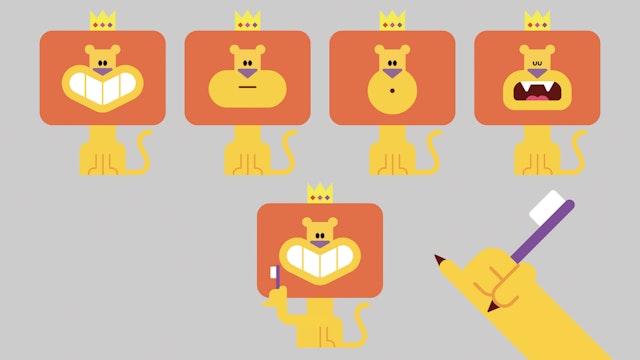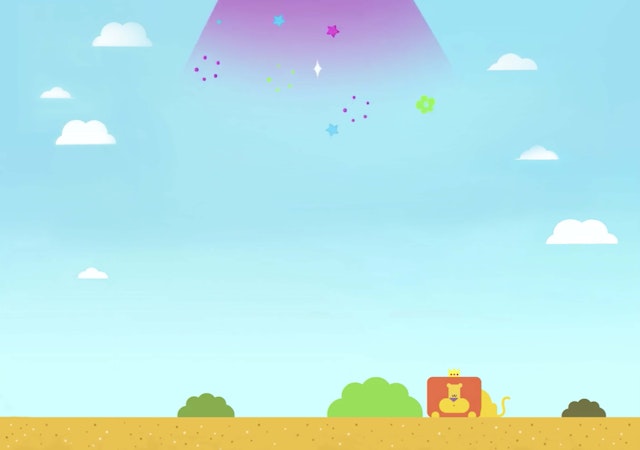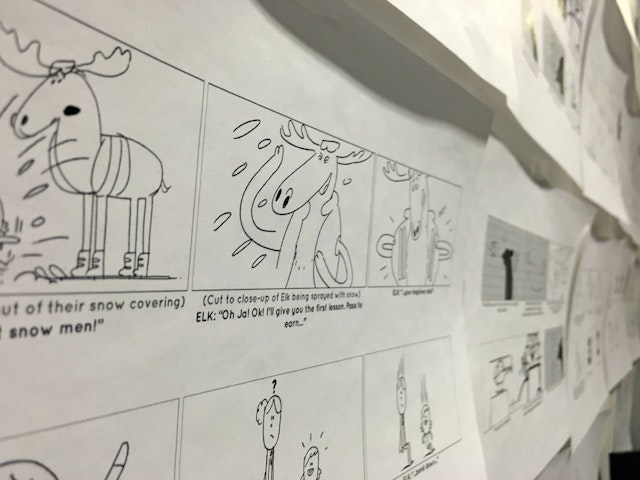Anatomy of an Ad: How Unilever's Signal used chatbots to spread the word on brushing teeth
Toothpaste brand Signal’s combination of chatbots and storytelling is improving dental health by encouraging families to brush together.
Since Facebook launched its Messenger bot service in April, brands and individuals have created more than 11,000 chatbots for the platform. Some can place orders for tacos or summon an Uber, others keep users up to speed with the latest headlines.
And while chatbots aren’t exactly new (Mark Zuckerberg simply kickstarted a robot revolution and, ever since, the medium has served as a tool for brand and consumer conversation within the walls of most major social networks), is it possible that bots could really change the world?
Unilever thinks so and in October its oral care brand Signal (Pepsodent in some markets) debuted a chatbot that seeks to alter behaviour and encourage kids to brush their teeth through interactive storytelling.
The struggle to get children brushing their teeth twice a day will be familiar to many parents and, according to the World Health Organization, oral diseases are among the world’s most common ailments, with dental decay impacting almost 100% of adults and up to 90% of children in some countries. This has a knock-on effect in kids’ lives, with toothache the number one reason for absenteeism from schools in many countries. Poor oral hygiene has also been linked to life-threatening illnesses in later years – the Oral Health Foundation associates it with heart disease, strokes and rheumatoid arthritis.
Unilever says these consequences are largely preventable, however, and points to clinical data that shows brushing teeth twice each day with fluoride toothpaste can reduce tooth decay by up to 50% in children when compared with just once a day.
The FMCG giant has been looking to drive awareness around this for some time, through a partnership with the FDI World Dental Federation and oral health education programmes in schools. Signal’s campaigns and events around the issue have already reached 71 million people worldwide, but one obstacle is parents don’t necessarily practise what they preach. So with the help of R/GA London, Signal is harnessing the power of social media to inspire kids and parents to brush their teeth together.
“The idea was born from an insight that children’s habits are formed by watching what their parents do, good and bad, yet they rarely see them brush their teeth,” says Andrew Ferguson, group creative director, R/GA.
“Some of our initial ideas used traditional communications techniques, but we soon realised that to achieve behaviour change we would need a completely different approach, to create deeper engagement. And so the adventures of ‘Little Brush, Big Brush’ was born.”
Leveraging mobile

The push comprises access to free 21-episode animations that aim to inspire action and change behaviour. To sign up, parents have to message Signal via its Facebook page, which will activate the chatbot. After answering questions, they’re invited to select the time of day they want to watch an episode of the show, which is set in a magical realm inhabited by quirky animal characters travelling the world.
The chatbot is being rolled out in Indonesia and Vietnam first, two of Signal’s biggest markets, and Unilever research found that, in the former, 79% of parents tell their children to brush their teeth twice daily but don’t do the same themselves.
The experience is tailored to families based on their initial ‘conversation’ with the bot, ensuring the parent and child are central to the narrative. Participants receive an episode each evening on their phone and must complete brushing challenges to unlock rewards and take them to the next episode. For example, a friendly lion in the Serengeti will give them his hot-air balloon if they complete a brushing-related activity.
This imaginative approach was the ‘strong hook’ Signal needed, according to Serena Mariani, Unilever’s senior global marketing manager of oral care. “We wanted to move away from simply spreading the message to encouraging behavioural change by leveraging mobile’s accessibility and reach.”
Acknowledging that serving up ‘reminders’ wouldn’t be enough, Mariani understood the company needed an engaging proposition to retain children’s attention. “That’s why we loved R/GA’s storytelling approach,” she says.
The final project turned out to be surprisingly close to R/GA’s original vision, notes group director of strategy Tommy Mancktelow, but it wasn’t without challenges. A message-based project had been in the pipeline for Signal months before Facebook brought bots into the mainstream; as such, the team investigated every possible messaging solution, and had a contingency plan.
“Everything felt like a compromise,” muses Ferguson, adding that, when Facebook announced it was opening up bots on Messenger to developers, the news “came as a relief” and validated that the creative shop was tapping into something potentially huge.
Mancktelow agrees, saying: “The emergence of Facebook Messenger helped solidify the entire idea, from a user experience and media perspective.”
There were tweaks to the creative along the way, but Mancktelow concedes they were for the best. For example, animation partner Studio AKA suggested exotic animal characters over human ones. “Immediately we understood how that would appeal to a five-year-old,” says the strategy lead.
“We also knew personalisation was key,” chips in Ferguson. “We wanted to go as far as customising the characters in the story but ruled this out as it would involve creating an app that would become too much of a barrier for the user. A solution was found by personalising the Messenger Bot script.”
Keeping things human

A copywriter helped craft the chatbot’s script to make it feel ‘human’, and given that the channel is still firmly in the test-and-learn arena for brands, the creative team involved tech and user experience experts from the outset. From Unilever’s side, senior marketers with experience in behaviour change communications worked on the project, aided by digital marketing and media specialists. No one in the brand’s team had ever created a chatbot, so they partnered with intelligence platform Msg.AI to work on the development aspects.
As for writing the episodes, Signal and R/GA collaborated with a child psychologist to strike the right tone for children – everything from the type of animals, story arcs and length to reward mechanisms. From a creative standpoint, Signal believes the biggest difficulty was creating a truly global platform, with a story and characters that would resonate with families in both developing and developed markets, and that sensitively accounted for “widely different cultures”.
Brushing up on bots

On why Facebook was chosen as the platform to launch the campaign, Mariani says the social behemoth is “absolutely ubiquitous” and very relevant for Signal’s target of families and mums. She points out, however, that the core concept of the push is to be an interactive experience, so the brand has the option to be fairly platform-agnostic.
While it’s clear Unilever isn’t ready to brush aside other social networks just yet, the combination of robots and storytelling shows brands no longer see bots as a passing fad.
But Mariani warns, “it has to be about purposeful creativity and not just doing crazy stuff for the sake of it,” which, she says, happens a lot with new technology. “Everything we did was rooted in what we thought was best for the consumer.
“We wanted to develop something that wasn’t just fun and entertaining, but also educational without being overly serious and ‘robotic’.”
This article was originally published in The Drum magazine's 9 November issue.
Content created with:

R/GA
Find out more
